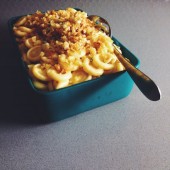8 months ago I started this blog with the intention of covering a food-related topic that hits close to home. Today, I’m finally getting the chance to share it.
As many of you know, in this country, and around the world, we’re facing an epidemic; a serious, and growing public health concern. Food allergies are on the rise, touching millions of families worldwide.
A few facts to consider:
- Up to 15 million Americans have food allergies, which affects every 1/13 children
- There are 200,000 emergency room visits each year due to exposure to food allergens
- A CDC study conducted in 2008, discovered an 18% increase in food allergies over the previous 10-year period.
The situation is grim, and it’s getting worse.
Theories abound, including the hygiene hypothesis, which suggests that we’ve become too clean and our immune systems are sitting around idle, waiting to attack, something, anything, even if it’s harmless.
Eight foods account for 90 percent of all reactions: milk, eggs, peanuts, tree nuts, soy, wheat, fish and shellfish.
Lauren, who started First Grade this year, has an anaphylactic reaction to two of them (peanuts and tree nuts) as well as third: sesame.
When Lauren was first diagnosed with her food allergies, I was worried. I thought about the years to come: how could I send her to school? On play dates? To summer camp? I loaded up on Epipens and stashed them around the house, in diaper bags, and in the bottom of the stroller. I threw out any offending substances – the Tahini paste in the fridge, the nuts in my freezer, and the jars of sesame seeds and Asian sauces in my cupboard.
But even with all of that vigilance, you can never fully protect your kids.
A few months after Lauren turned 2 we had our first allergic episode. A guest had brought peanut butter Easter eggs to a dinner party we hosted for my husband’s birthday. Somehow, over the course of the evening, they’d gotten mixed into the bowl of solid milk chocolate eggs that I was planning to hide the next morning.
When Lauren woke up, she was thrilled to find that the Easter bunny had visited. She quickly uncovered the eggs from their hiding spots, unwrapped the first, and bit into it.
I didn’t realize the mistake until Lauren was halfway through her egg and I noticed that the center looked different from the shell.
I tried the remaining half and was horrified when I tasted peanut butter. Panic set in and I watched her with a close eye.
She seemed to be a little uncomfortable, but nothing happened in the first half hour. I was starting to think that her skin test was a false positive when she started to cough and wheeze. Slowly at first, but progressively it got worse. She quickly got to a point where she was gasping for air and I realized that we were dealing with an anaphylactic reaction. Because of the slow onset, I’d been taken off guard – this wasn’t how I’d expected anaphylaxis to unfold.
I dug through the diaper bag with shaky hands and found the Epipen. After tearing off the blue top, I grabbed a fistful of skin and injected it into her thigh. She responded immediately. The coughing and wheezing stopped. She was back to her normal 2-year old self, laughing and chatting about the Easter bunny. Stunned, we packed a bag, strapped her into the stroller, and took her straight to the hospital.
As terrifying as our experience was, I learned a valuable lesson. That the Epipen is not to be feared, that it’s there for emergency situations, and that it works. I gained confidence in my ability to handle a similar situation, God forbid it were to ever happen again.
In the years since, I’ve taken the time to educate myself about food allergies. I’ve read the books, the journals, the blogs. I’ve learned, for instance, that subsequent reactions are not always more serious. They can be, but having one reaction doesn’t mean that the next time will be worse.
I’ve also learned that because of the growing awareness about food allergies, anaphalaxis-related deaths are rare.
Most important, I’ve learned that it’s critical to give the Epipen at the first sign of a severe reaction. Don’t wait, as I did, for symptoms to worsen. Although we were fortunate, waiting is like playing a game of Russian roulette – anaphylaxis is unpredictable, and in some cases you don’t know the severity of a reaction until it’s too late.
Today, rather than fear the diagnosis, we now face it head on, which counter-intuitively gives us the ability to live a more normal life.
Although I still do get the occasional pit in my stomach, I send her on school field trips and allow her to eat the school-provided lunch every day. As long as I know that her medicine is close by, I’m comfortable letting her do the activities that all of her friends and classmates are doing.
And we no longer restrict foods in our home – my other two kids eat peanut butter sandwiches. I keep hummus in the fridge. We’re careful about wiping down surfaces and washing hands. We talk to her and the kids regularly about how to be safe.
In some ways, simulating the outside environment in our home makes me comfortable that Lauren can handle herself when I’m not able to watch over her. Which these days, is the majority of her day.
She’s acutely aware of the things that she can and can’t eat. She asks me whether something is safe when she’s unsure. She’s becoming her own advocate, which is a big thing to ask of a 5-year old, but is so important.
All things being equal, she’s growing up as a normal kid and we try not to make her allergies her defining characteristic. She’s a creative 5-year old who loves art and gymnastics, and she happens to have an allergy. Not the other way around.
Sometimes I wonder if this is the right approach. Are we too relaxed? Am I putting her in harm’s way?
I keep reminding myself that as parents we weigh the risks. Just as there is a risk of her coming into contact with the wrong foods, I feel strongly that hypervigilance about her allergies could impact her character and personality in a negative way. I don’t want her to live a life on the sidelines, longing to join in on the typical kids’ activities but unable to. As much as possible, I want to say “yes”, not “no”. To quote Michelle Obama, I want to give her “as long a leash” as she can handle.
It’s not the right approach for everyone. But it feels like the right one for us. Lauren has told me that her allergies aren’t a source of frustration or shame. That means the world to me.
Her biggest gripe? That she doesn’t know what peanut butter tastes like. And hopefully one day, if the medical community can figure out a treatment, she just might get the chance.
Data source: CDC study reported by USNews.com, May 2, 2013; foodallergy.org (FARE)








Jess,
It is awesome to see that you do not restrict everyone in the family from eating the things your daughter can not. I am sure that helps her feel a bit more normal. Not sure how it is in NY but back in good old TO it seems every place you go is becoming a nut free zone. I know i try to be vigilant with Aaron, making him wash his hands after he has eaten anything nutty, i am petrified that his eating peanuts will make someone else’s kid sick. Seeing that you can manage it in your own house makes me feel a little less worried. Also you should look into a new therapy they are doing where in a controlled setting they give you tiny amounts of what your are allergic to to train your immune system not to react.
Hey Mel, so nice to get your response! There’s so much heated debate about this issue – parents who want to protect their kids, parents who don’t want to change their habits because of someone else’s kid. Our stance is “do what you want, we’re prepared” – people aren’t going to stop eating sesame bagels at school, or bringing hummus, so we already need to deal with that, never mind the nuts.
You just give as much control to your kids as you can, make sure they wash their hands really well before anything goes in their mouths. And yes, we’re hoping to do one of the immunotherapy trials. We finally switched doctors and are seeing the docs at Mt. Sinai who run clinical trials and food challenges, so we’ll see what happens. The only downside is that it’s a lot of doc visits, but could be worth it.
Jess, from a teacher’s point of view, I think your approach is great. When I have kids in the classroom who have serious allergies, the ones with the calm, rationally reactive parents are the ones who themselves can assess and communicate what is going on when there is something wrong. When parents become overly excitable, or overly controlling on what others are doing, the child with the allergy doesn’t actually understand a lot except that panic is what they should feel.
I once had an 8 year old child describe his allergic reaction to me in the calmest, most mature voice. He described every sensation as we sat down in the nurse’s office and waited for his liquid bene and ultimately, epipen. It was amazing to me how calm he was through it all. When his mom came to get him she was equally as calm (even though I am sure she was freaking out inside), and told me that this is a part of their life that they have learned to work with. This little guy always knew what was supposed to go in his mouth and what was not, and a sip from someone else’s water accidentally caused a major reaction. I will never forget that, and will never forget his ability to communicate through it all. I give his parents complete credit for teaching him this.
Allergies are incredibly scary, and I am sorry you guys have to deal with this. In the end, this allergy will have given Lauren a special quality – whether it be vigilance or cautiousness, or maybe calmness in crazy times – that will make her a strong little girl and help her somewhere else down the line.
Thanks so much Lor, and that’s an incredible story about your 8-year old in the classroom. Lauren has such a good attitude about it all – and the interesting thing is that she’s the biggest food lover of all of them. She always wants to try new things. Having to be so thoughtful about food seems to have made her curious about what she eats, where it comes from, who made it – a factory, or me.
There is so much angst about food allergies, and I really believe that if you give them the proper tools, kids, even young ones, are able to help keep themselves safe.
Thanks for sharing your awesome comments…
Great commentary. I agree with your approach 100%. Wish more parents were like you guys!
Thanks ML, such a sweet comment, I appreciate it!
Hello, I saw your post on BabyCenter and came over to check out the blog. We got our peanut allergy diagnosis last month and it seems that so much fear is thrown at you in the popular media and on the mommy blogs. I am not a fearful person by nature, and I do think the science and your experiences (as well as others who probably don’t report their experiences since they aren’t so fraught) back up the need to take a deep breath and not panic. As my mom said, “A peanut allergy? So what! Just don’t give him peanuts and give him the epipen if he does get some. That’s nothing!” Thanks so much for sharing your commonsense approach–it is a huge help!
Samantha, thanks so much for coming by to check out the blog. Yes, there was pretty healthy discussion on BabyCenter about the post, and to be honest, I was really nervous to post there because as you say, there is so much debate in the blog world about how to handle this.
There seem to be main 2 sides to the discussion – the food allergy families who want allergens out of the schools on one side and the food allergy-free families who think it’s overreacting. I’m not taking sides, but in the heated arguments back and forth, it does tend to escalate the talk of doom and gloom.
I felt that it was important to share our story because we don’t really fall on either side. Not that I don’t care, but I don’t get emotional about it. That may be because our daughter doesn’t have a severe contact allergy, it’s only when ingested, so the risks are lower than they are for some. But I would guess that the majority of food allergy sufferers are in this boat where it’s not so extreme that mere contact can cause anaphylactic shock.
I really like your mom’s approach- and that’s how we handle it too. It’s a peanut allergy, if there’s contact and we need the epipen, we’ll use it. The fact is that there are very few fatalities each year from allergies, the likelihood is overwhelmingly in our favor that we’ll be just fine. You have a greater risk of accident commuting to work or school in a car.
For me, the worry/risk relationship seems to be wildly out of proportion, and I do think that it was damaging to me psychologically to be so stressed about it. I can only imagine what it would have done to my daughter if I’d carried that stress around and prevented her from joining activities like I once did.
Thanks so much for your support, and I’m so glad that this approach makes sense for you.